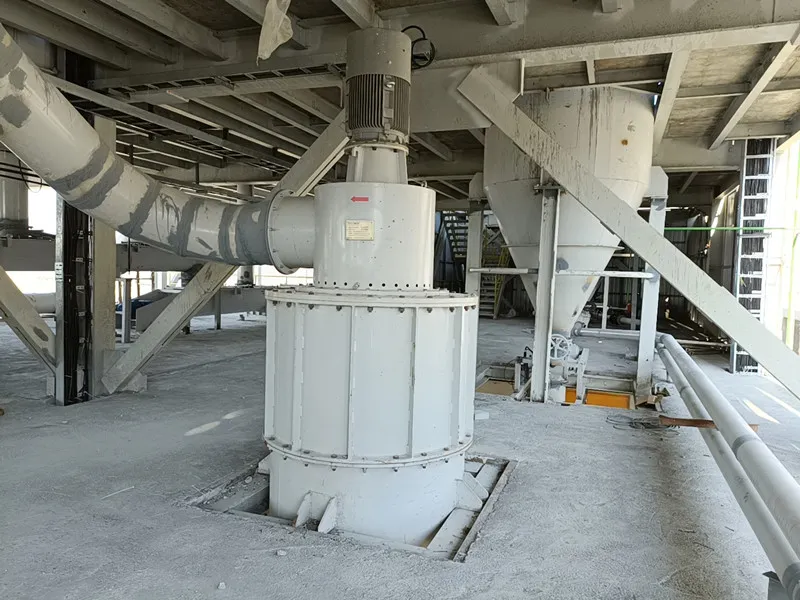Heavy calcium powder, also known as heavy calcium carbonate (CaCO3), is widely used in various industries due to its unique properties. Achieving the desired particle size distribution during the grinding process is crucial for optimizing the performance of heavy calcium powder. The selection of appropriate classifiers plays a vital role in meeting specific particle size requirements. In this article, we will explore the properties of heavy calcium powder and discuss different types of classifiers used for grinding heavy calcium carbonate.
Understanding Heavy Calcium Powder:
Heavy calcium powder refers to finely ground particles of heavy calcium carbonate extracted from natural limestone or marble deposits. It possesses distinctive characteristics such as higher density, larger particle size range, excellent whiteness, and chemical stability. These features make heavy calcium powder suitable for a wide range of applications across various industries.
Different Types of Heavy Calcium Powder Classifiers:
Classifiers are essential components in the grinding process of heavy calcium carbonate. They separate and classify particles based on their size, ensuring that the final product meets the desired particle size distribution. Below are some commonly used classifiers for heavy calcium powder grinding:
Vibrating Screen of Heavy Calcium Powder
The vibrating screen plays a vital role in the production process of heavy calcium powder. Its primary function is to separate the powdered material into different particle sizes. This is achieved by using a vibrating motor to cause the screen to vibrate, allowing the material to pass through the screen mesh according to its size. The larger particles are retained on the screen surface, while the smaller particles fall through the mesh. The vibrating screen is suitable for 40-80 mesh in the heavy calcium powder classification process.
ITC air classifier of Heavy Calcium Powder
One of the key advantages of the ITC Air Classifier is its high precision in particle size control. The classifier is capable of producing heavy calcium powder with a narrow particle size distribution, ensuring consistent quality and performance in various applications. This is particularly important in industries such as plastics, rubber, and coatings, where precise particle size is critical for achieving desired properties. ITC heavy calcium powder airflow classifier is suitable for producing D97: 75-10 micron fine powder.

HTS air classifier of Heavy Calcium Powder
One of the key features of the HTS Air Classifier is its ability to produce a narrow particle size distribution. The classifier is equipped with a multi-wheel design, which allows for precise control over the particle size. The heavy calcium powder is fed into the classifier through a feed inlet, where it is dispersed by the primary airflow. The particles are then accelerated by the centrifugal force generated by the rotating wheels. The larger particles are forced to the outer edge of the classifier, while the finer particles are carried by the airflow to the inner cone. This separation process ensures that the heavy calcium powder is classified into different size fractions, resulting in a narrow particle size distribution. HTS heavy calcium powder airflow classifier is suitable for producing D97: 45-8 micron fine powder.
TDC air classifier of Heavy Calcium Powder
The TDC Air Classifier is designed to separate heavy calcium powder particles based on their size and density. It utilizes the principle of centrifugal force and air flow to achieve accurate and efficient classification. The equipment consists of a main machine, cyclone collector, dust collector, induced draft fan, and other components. Through the combination and coordination of these parts, the TDC Air Classifier effectively separates the heavy calcium powder into different size fractions. TDC heavy calcium powder airflow classifier is suitable for producing D97: 5-10 micron fine powder.
Considerations for Classifier Selection:
When choosing a classifier for grinding heavy calcium carbonate, several factors should be considered:
- Required Particle Size Range:
Different applications may have specific particle size requirements. It is crucial to select a classifier that can effectively achieve the desired particle size distribution within the required range. - Production Capacity:
The production capacity of the classifier should align with the overall grinding system’s capacity to ensure efficient operation and meet production demands. - Energy Efficiency:
Selecting an energy-efficient classifier can contribute to reducing operating costs and minimizing environmental impact. - Maintenance and Serviceability:
Consideration should be given to the ease of maintenance and serviceability of the chosen classifier to ensure smooth operation and minimize downtime.
Grinding heavy calcium carbonate requires the use of appropriate classifiers to achieve the desired particle size distribution. Air classifiers are commonly employed in the grinding process. Each classifier type offers unique benefits in terms of classification accuracy, flexibility, efficiency, and handling capabilities. Understanding the characteristics of heavy calcium powder and selecting the appropriate classifier enable manufacturers to optimize the grinding process, ensuring consistent and high-quality heavy calcium powder with tailored particle size distributions. By considering particle size requirements, production capacity, energy efficiency, and maintenance aspects, manufacturers can choose the most suitable classifier for their specific grinding applications.
